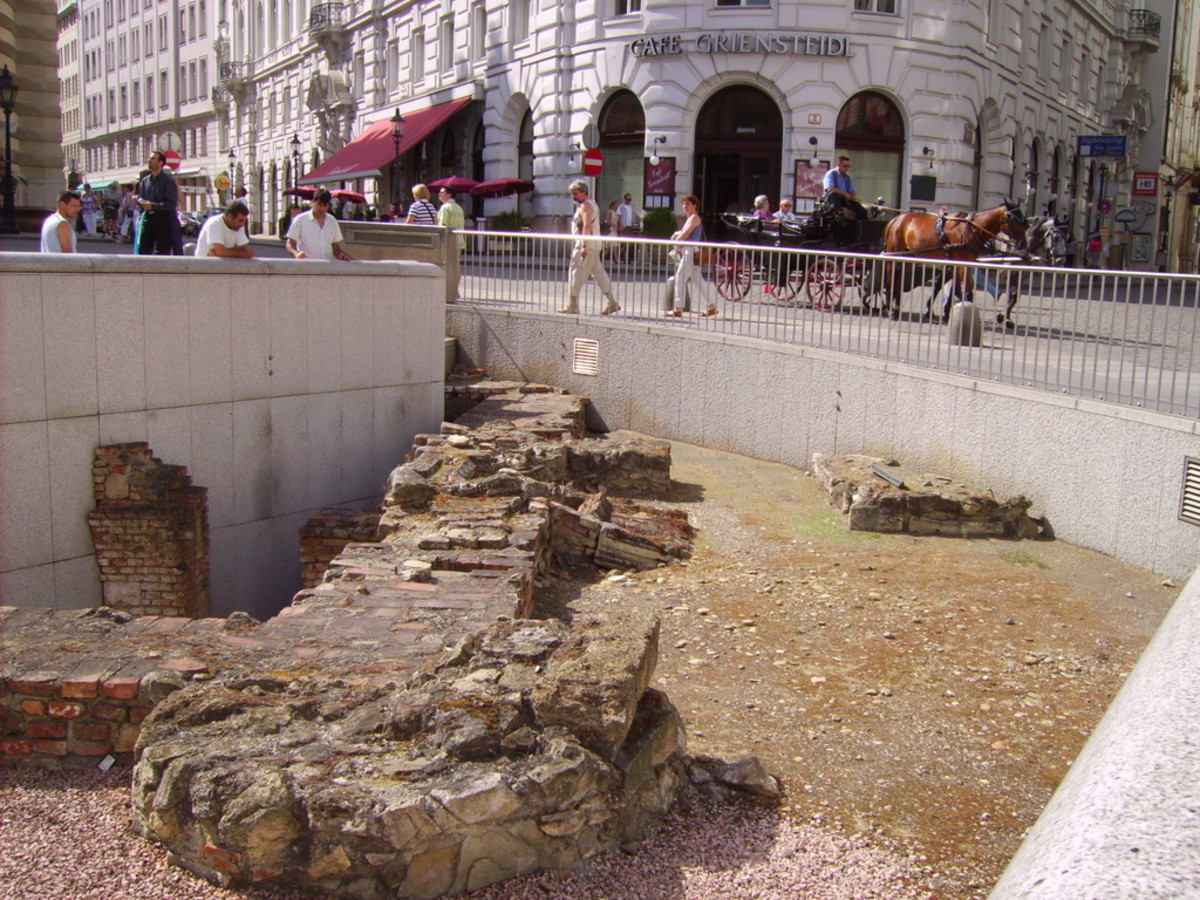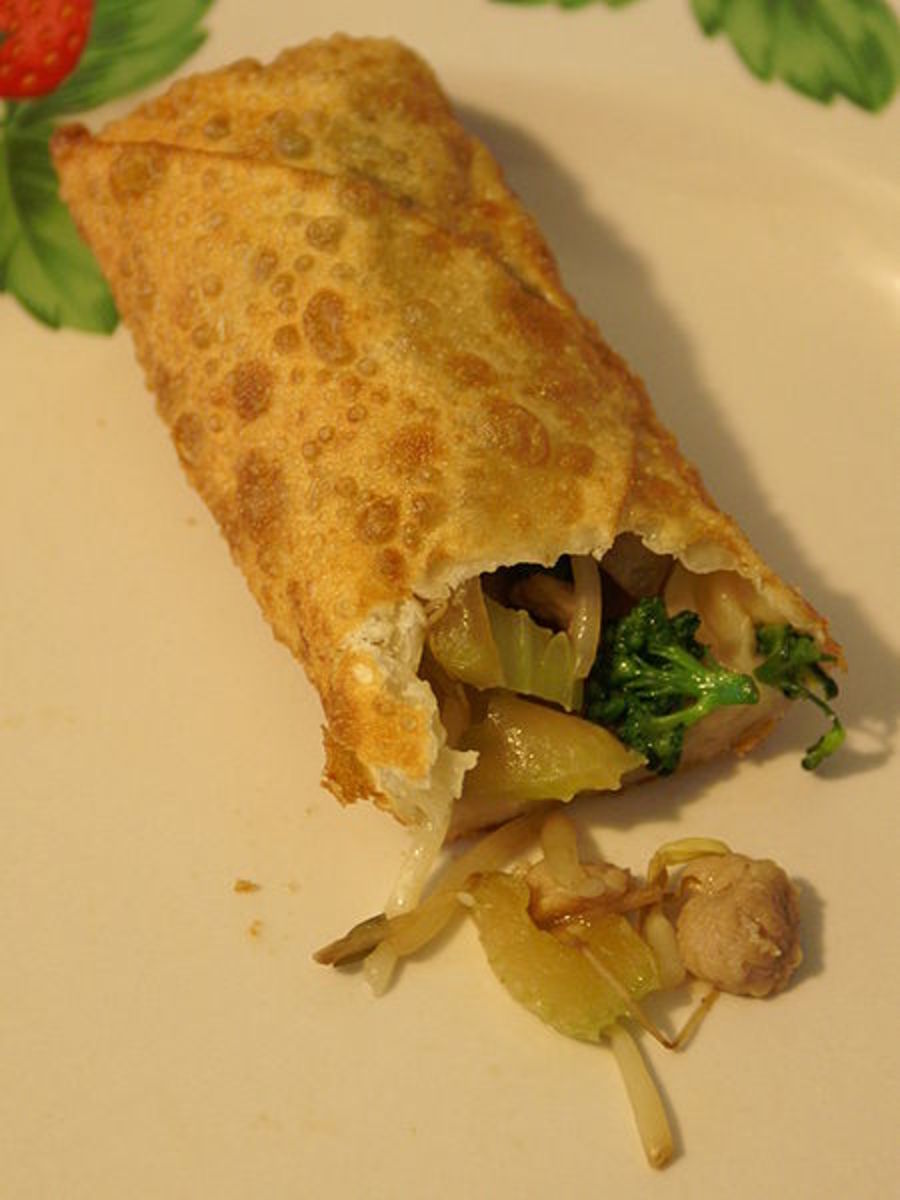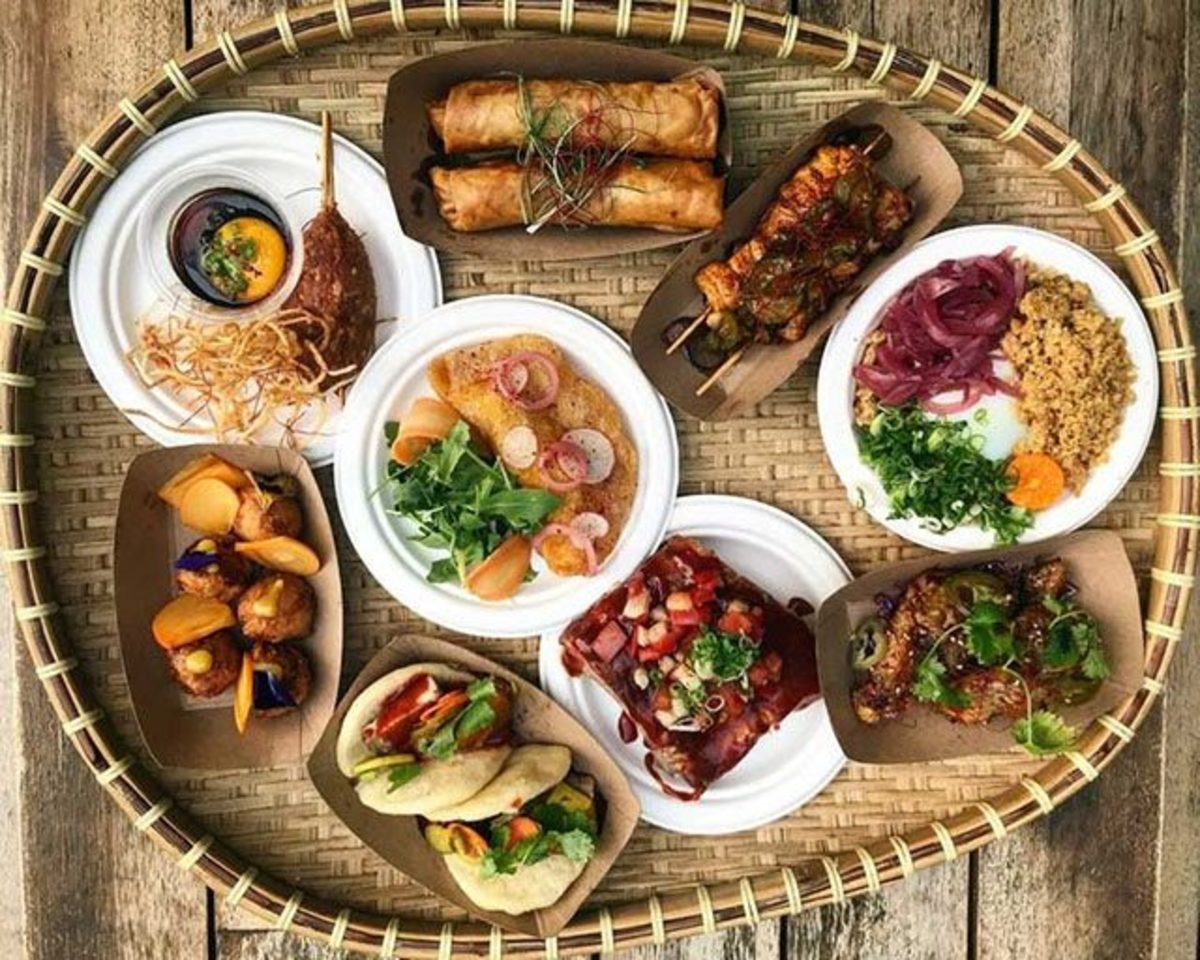Slovenia: A European Gem For Your Bucket List (Foods, Part 3)
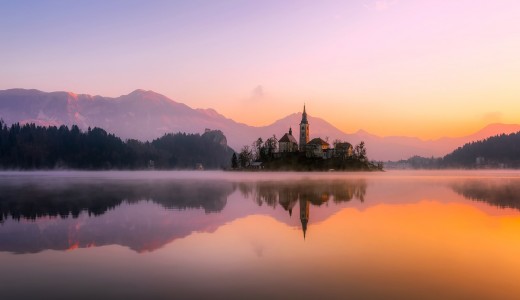
I truly believe that the expression “the way to a man’s heart is through his stomach” originated in Slovenia. For Slovene’s, food is more than mere sustenance; it’s a celebration of the many regional and cultural influences that have been a part of their history.
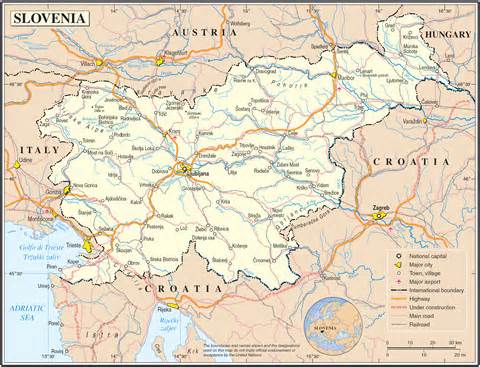
From as early as the A.D. 800’s, Slovenia has been under foreign control, not gaining independence until 1991. For over 1,000 years, Slovenes lived mostly under German rule as part of the Holy Roman (962–1806), Austrian (1806–1867), and Austro-Hungarian (1867–1918) empires.
World War II divided present-day Slovenia among German, Hungarian and Italian powers. Each of these countries, along with neighboring Austria to the north, has contributed significantly to Slovene cuisine.
Western Slovenia—The Italian Influence
When you think of Italy, do your thoughts turn to steaming bowls of pasta ala Chef Boyardee? I must admit that was my impression of Italy until I actually visited Italy.
In the northern portion of that country, polenta and rice are the carbohydrates (starchy comfort foods) of choice and they appear frequently on western Slovene tables as well.
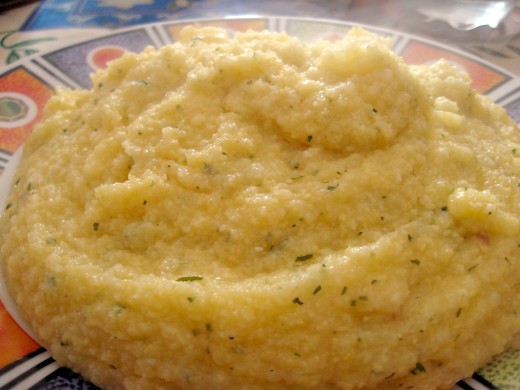
Polenta
White and yellow polentas are popular in western Slovenia, typically served soft and topped with a ragu of beef and pork or rabbit.
Ingredients for the Polenta:
- 1 cup yellow polenta or cornmeal (not instant)
- 2 cups chicken stock or water
- 2 cups milk or half and half
- 1/2 cup freshly grated Parmigiano-Reggiano cheese, plus more for serving
- 2 tablespoons unsalted butter
- Torn fresh basil (for garnish)
- Chopped fresh flat-leaf parsley (for garnish)
- Parmigiano cheese, grated (for garnish)
Directions for the Polenta:
- Place the stock and milk or half and half in a saucepan over medium-high heat and bring to a boil.
- Slowly pour the polenta into the hot liquid, whisking briskly to prevent clumping.
- Reduce the heat to low and cook, whisking constantly, for about 10-20 minutes, until the liquid is absorbed and the polenta has a creamy (not gritty) feel. If it seems it is becoming too thick, feel free to add a bit more broth, milk, or even hot water.
- Add the cheese and butter, stirring gently until incorporated.
- Spoon a mound of soft polenta on each of 4 or 6 shallow bowls or plates.
- Ladle the ragu over the polenta and garnish with basil, parsley, and grated Parmigiano cheese. Makes 4 to 6 servings.
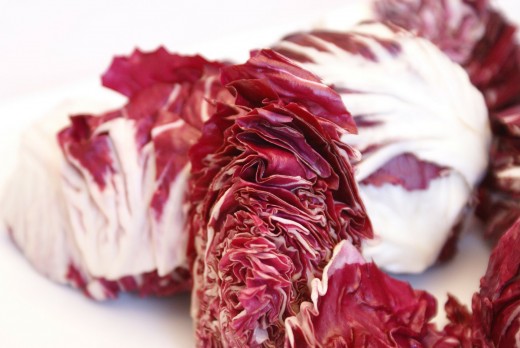
Radicchio Risotto
Are you familiar with "risotto"? If you peek at Wikipedia, they will tell you that "Risotto is a class of Italian dishes of rice cooked in broth to a creamy consistency. It is one of the most common ways of cooking rice in Italy."
Yes, it is cooked rice, and it is a bit more complicated than Minute Rice from a box, but it's also far more satisfying.
Risotto is not difficult, but the rice that you choose is very important. Don't run to your cupboard and grab a box of Uncle Ben's or a sack of generic long-grain rice. It won't work. You need a short-grain arborio rice. Arborio rice has a higher starch content and remains firm (al dente) when cooked--that is exactly what you want and need for a proper risotto.
Risotto is creamy, but not mushy. The grains remain gently "toothy" but are enveloped in a creamy cloak which results from the mixing of the starch with the liquids in which the rice simmers.
This risotto marries cheesy-creamy rice with the earthy flavor of radicchio and the herbal note of thyme and is a common dish in western Slovenia.
Ingredients
- 2 tablespoons butter
- 1 1/2 tsp. olive oil
- 1/2 cup minced onion
- 1 garlic clove, minced
- 1/2 tsp. dried thyme leaves
- 1 small head radicchio, chopped
- 3/4 cup dry white wine
- 1 cup arborio rice
- 1/4 tsp. ground black pepper
- 3-4 cups chicken, vegetable, or mushroom broth, heated to a simmer
- 2 tablespoons dry red wine
- 1/4 cup Parmesan cheese, grated
- 1/4 cup mascarpone cheese
Instructions
- In large frying pan melt 1 tablespoon butter with olive oil over medium heat. Add onion and garlic and cook until onion is soft, about 2 minutes.
- Add 1/4 cup of the wine and cook until wine is absorbed. Stir in thyme and chopped radicchio. Remove from heat and cover to keep warm.
- Melt remaining 1 tablespoon butter in a large heavy saucepan over medium heat. Add rice, pepper, and remaining 1/2 cup white wine. Stir to insure that rice does not clump together and cook until wine is absorbed. Add 1 cup broth, reduce heat to low, and stir until broth is almost absorbed. Continue to add broth, 1/2 cup at a time and stirring until rice is creamy and tender but still firm in center. This should take about 15 to 18 minutes.
- Stir in reserved onion/radicchio mixture and dry red wine. Remove from heat and stir in Parmesan and mascarpone cheese.
Northern Slovenia—A Taste of Austria
How does one begin to describe the flavors of Austria?
If the only impression you have of Austria is the Von Trapp family singing that the hills are alive, then you will be pleasantly surprised. Whether you dine at a 4-star restaurant, or are enjoying a simple peasant dish, don't expect low-fat, light calorie foods. Expect to find rich, sumptuous, and satisfying. Austria's specialties might have originated from the former monarchies of Hungary, Bohemia, and Italy, but they were perfected here.
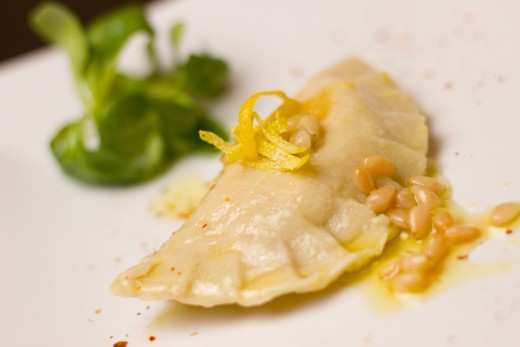
Carinthian Cheese Noodles
These stuffed pastas are commonly filled with cooked potatoes and then topped with melted butter, shaved cheese, and crisp cooked bacon.
Ingredients for the noodle dough:
- 1 1/4 cups flour
- 1 egg
- pinch of salt
- 1/2 tsp. cooking oil
- Water as required
- Egg white (for sealing the edges of the noodle)
Ingredients for the Filling
- 3/4 diced peeled potatoes
- 1 1/4 cups small curd cottage cheese
- 2 tbsp diced onion
- 2 teaspoons salted butter
- 1 egg
- 2 tbsp mixed, finely-chopped herbs (mint, chervil, parsley)
- 2–3 tbsp sour cream, as required
1. To make the dough, make a pile of flour on the work surface, create a hollow in the middle and beat the egg into it. Salt the mix slightly. Work in a little oil and sufficient water to produce a smooth, workable dough. Form into a ball, cover with plastic wrap and let rest for 30–45 minutes.
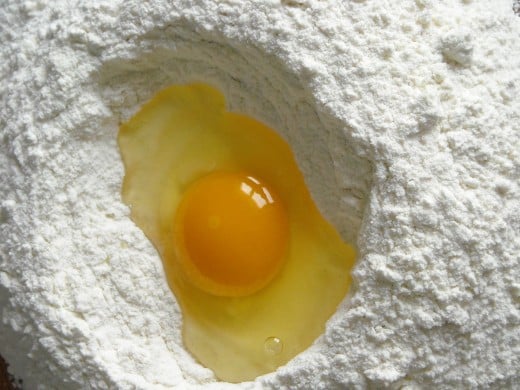
2. In the meantime cook the potatoes until soft, allow to cool briefly and press or sieve through a potato ricer. Sweat the onions in butter, add the herbs and remove from the heat. Mix all the ingredients together and work into a malleable paste filling. If necessary, loosen the mix with sour cream.
3. Roll out the dough on a floured work surface until it is the thickness of the back of a knife. Cut out disks of approx. 3 inch diameter using an upturned glass or circular cutter. Shape small balls of the paste filling and place these on the dough circles, or use a spoon to apply the filling. Coat the edges of the dough with the beaten egg white, fold the dough together and press firmly. Press the edges between the fingers to form grooves and set on a floured board.
4. Place the noodles into salted boiling water and, depending on size, leave to simmer gently for 10–12 minutes. Remove carefully and arrange on preheated plates. Cover generously with foamed brown butter and serve.
Northeastern Slovenia—The Inspiration from Hungary
Let's try a simple test. When you heard the word "Hungarian" do you think "goulash" or "paprika"? They're both correct.
Gulyas (commonly spelled goulash and pronounced goo-yash) was born on the Hungarian plains. Ancient Hungarians were cattle-herding people. The called the herd of cattle gulya, and the simple beef soup they made was called gulyas. To make the very lean and tough beef tender, they cooked it slowly in a kettle with water and flavored it with onions, vegetables, and herbs.
When pepper plants finally arrived in Hungary from America (via the Turks), they flourished in the good soil and climate. Both the fresh fruit and the ground paprika, which was made from dried red peppers, were quite welcome. The paprika gave the dishes a beautiful red color that had never been seen before in Hungary. The potato arrived from America about the same time, so the perfect combination—beef, onion, paprika, and potato could be combined in the gulyas.
Gulyas, or goulash is still popular today and commonly seen on the Hungarian, and the northeastern Slovene table.
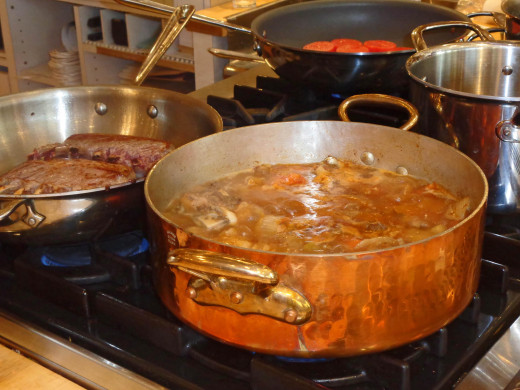
Goulash Soup
Ingredients
- 3 lbs. beef for stew, cut into 1/2-inch pieces
- 2 tsp. olive oil
- 1 1/2 cups chopped onions
- 4 cups beef broth
- 1/2 pound potatoes, grated, about 3/4 cup
- 1 tablespoon paprika, (sweet Hungarian or smoked)
- 1 tablespoon tomato sauce
- 1/4 tsp. dried thyme leaves
- 3/4 pound potatoes, peeled and diced, about 1 1/2 cups
- 1/2 cup dry noodles
- sour cream garnish, (optional)
Instructions
- Heat olive oil in 4-quart Dutch oven over medium heat; add about 1/3 of the beef to the pan and cook, stirring occasionally until browned on all sides. Remove from pan and repeat with remaining beef. It is important to not crowd the pan. If the pieces of beef are too close together they will not brown properly—instead, they will simply steam. Add more oil to the pan as needed.
- To the same pan stir in the onions and cook until onions begin to brown. Return browned beef chunks to the pan. Stir in remaining ingredients except for the diced potatoes and noodles. Heat to boiling; reduce heat and cover. Simmer 1 1/2 hours or until meat is tender. Note that the grated potatoes will fall apart--they are intended to thicken the soup.
- Stir in diced potatoes and noodles.
Southern Slovenia—Cradled by Croatia
The cuisine of southern Slovenia is heavily influenced by the foods available in this mostly agricultural area. Favorite desserts in this region are štrukle (phyllo filled with fresh cheese, apples, cherries, or other fruit) and pastries filled with honey and walnuts or jam.
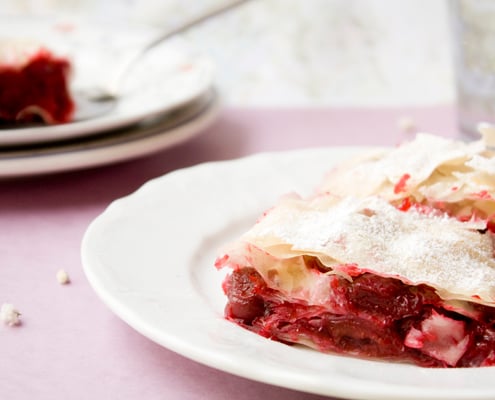
Sour Cherry Strudel
Many (most) of the recipes online for traditional strudel call for making the dough by hand and rolling it out to a paper thinness (almost transparent). I'm not asking that of you and found this wonderful recipe with all of the flavor of the strudels of Slovenia without all of the labor.
Southwestern Slovenia—The Love of the Adriatic
As one might expect, seafood is abundant in the Adriatic Sea, and on the tables of those dining in southwestern Slovenia. Although 21st-century refrigeration is available everywhere, salt cod (baccala) is still a popular and common dish.
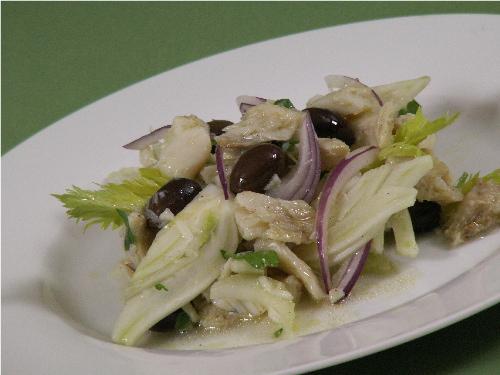
Baccala Salad
Unless you have visited this corner of the world or were raised there, this salad is going to be quite a surprise for you. Salted cod and briny olives are paired with crisp celery and sweet fennel to make a refreshing salad.
Central Slovenia—A True Melting Pot
Central Slovenia, with Ljubljana as the capital city, is truly where east meets west (and north meets south). Ljubljana ("lyoob-lyAH-nah") is a charming city full of artists, museums, and galleries. With a population of 300,000, it is one of the smallest capital cities in Europe. It is also the region where not one, but all historical realms, cultures, and cuisines converge.
I truly hope that you can take the time to visit all corners of this amazing country. The history, scenery, and architecture are worth the stay. But if your journey must be brief, at least visit Ljubljana. Here you can sample all of the culinary wonders of this country in one stop.
© 2015 Linda Lum



